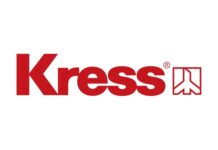Did you know that when Google was developed in 1996, founders Larry Page and Sergey Brin named their first search engine BackRub?
Yeah. It just doesn’t seem right, does it?
Fortunately, one year later, BackRub became too large to operate on the Stanford University servers that hosted the website, so they registered the domain as www.Google.com.
Not only did the name change prove successful, but one can’t go more than a few hours without hearing it used as a verb—as in, “Google it.” I don’t think answering a question with “BackRub it” or “Rub it” would have had the same ring to it.
Another very successful name change—though not as shocking or different—was when Apple went from Apple Computer to just Apple in 2007. That same year during the same speech, former Apple CEO Steve Jobs announced the first iPhone. Not a bad decision, considering the iPhone became the corporation’s most lucrative product and computers continue to decline as a percentage of the company’s revenue.
Those are two of the best name changes and rebranding efforts in history. Let’s take a look at some of the worst.
For instance, Radio Shack actually attempted to become more hip by calling itself The Shack. The suggestion of a small, dark place, in addition to throwing away decades of brand value, made it one of those decisions the company hopes people will just forget.
And when Andersen Consulting split ties with Arthur Andersen, business executives let a marketing consultant choose its new brand name, Accenture, which brand experts describe as a big, corporate name that means nothing. Inspired by the phrase, “accent of the future,” the name says little about the company or what it actually does.
A brand identity, including its name and logo, is a company’s public face. As a result, companies must be careful in figuring out how to create or revamp that image at crucial times. The most successful rebranding experiences must involve looking at and incorporating a company’s message, goals and culture. That’s why Apple’s story is so perfect; they changed their name just enough at the right time when the market was changing, and it paid off.
Brand identities and company names have been on my mind lately after the December release describing the fresh name we can expect to hear come 2015 from the newly combined landscape giants Brickman Group and ValleyCrest Cos. The joint entity with more than 22,000 employees and annual revenue of $2 billion will soon be known as BrightView.
The name, which uses the “B” from Brickman and the “V” from ValleyCrest, suggests the bright views, or beautiful landscapes the organization designs, builds and maintains on its clients’ properties, the company says. Additionally, the company intends the name to speak to the bright views it offers its employees in terms of career advancement.
As BrightView CEO Andrew Kerin described, “BrightView is more than a name; it indicates what is to come. BrightView reflects our optimism for the future and our drive to create greater value for our clients. It embodies our excitement to leverage the strengths of our combined company to enhance how we care for our people, our clients and our communities. It also enables our team members and clients to take pride in trusted relationships and solutions that matter.”
While the reasoning behind the new moniker seems sound, I can’t help but wonder about the future of these merged landscape titans. I’ve been writing about this industry since 1998, and have interviewed the late Burton Sperber, ValleyCrest founder, and third-generation Brickman Group CEO Scott Brickman more than a few times. I can’t get used to the idea that the names Brickman and ValleyCrest will soon be no more.
ValleyCrest was founded in 1949 by Sperber, who was still active as chairman of the company when he passed away in 2011. What initially began as a small nursery with three employees grew to more than 150 locations around the world and 9,000 employees. Brickman started as a family business in 1939 like many landscape businesses did—out of the back of a pickup truck—and the company now boasts more than 10,000 employees, driving their very well-known brown and tan trucks.
The brand confusion might be challenging for Brickman and ValleyCrest, but it could be good for their competitors with already established names and reputations in their respective markets.
What do you think of the new name and how it will affect competition in your market?
Read more: Sounding Off On BrightView











![[VIDEO] Dickies®: Discover Workwear That’s Anything But Uniform](https://turfmagazine.com/wp-content/uploads/2023/06/1647663814-4b1a2a7742790a9b1e97a3b963477850192e1d6a9dfba9b07214a77bae25d6e3-d-218x150.jpg)





























![[VIDEO] Dickies®: Discover Workwear That’s Anything But Uniform](https://turfmagazine.com/wp-content/uploads/2023/06/1647663814-4b1a2a7742790a9b1e97a3b963477850192e1d6a9dfba9b07214a77bae25d6e3-d-324x160.jpg)